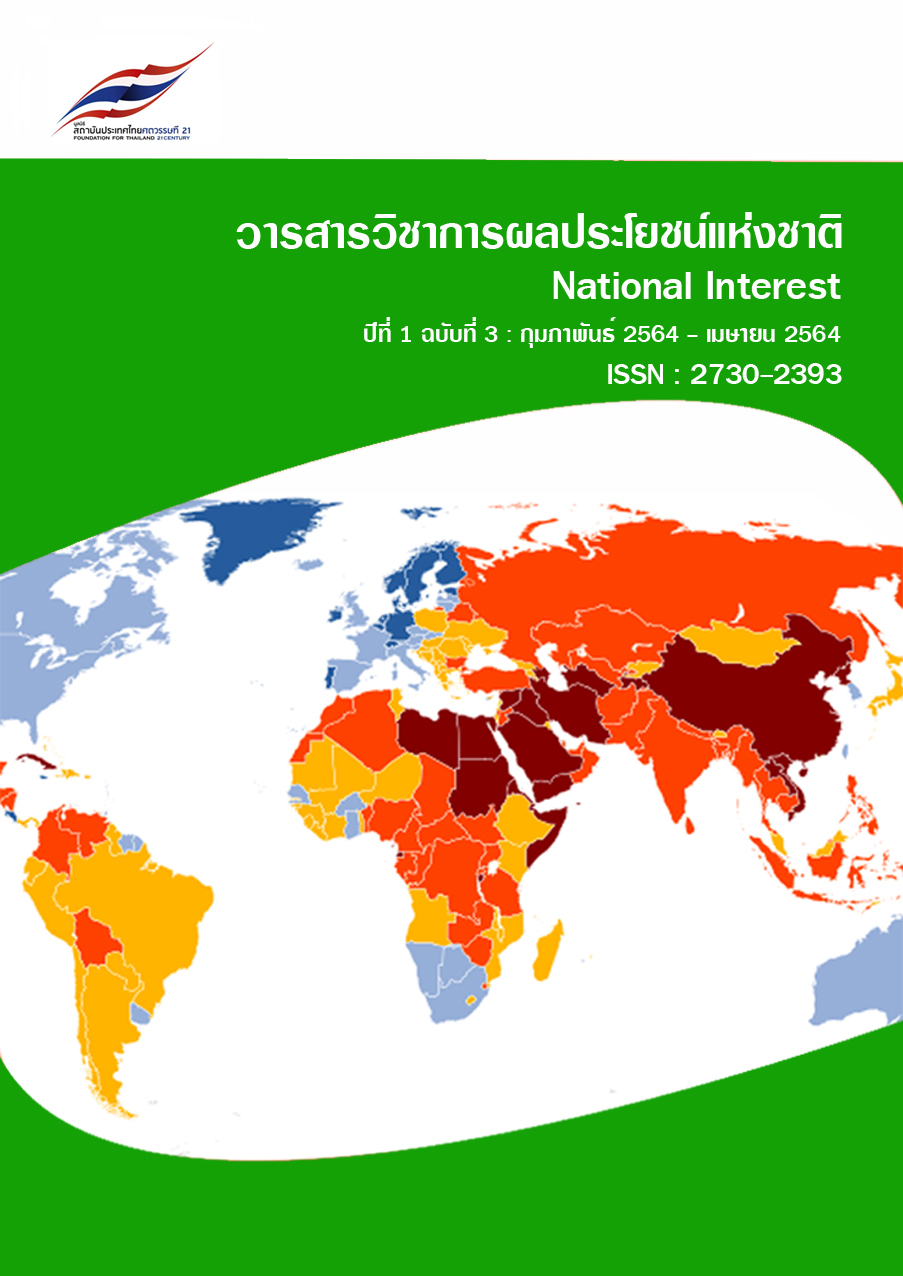Map Innovation and Its Importance to Geopolitics: A Case Study of Rice and Fish Towns (Rangsit - Thanyaburi - Minburi)
Main Article Content
Abstract
Map is an important that shows corridors, habitats, food sources in the corridors, is important for the study of information for both economic and political benefits. As a result of the increasing number needed in urban planning to suit the expansion of communities and the subsequent cleaning up, rural areas are becoming more and more important. Continuing to rethink information to determine climate paths and resources available for reference development, maps, in particular, are the principles for geopolitics to study the climate of the vapor and use them to plan, plan or modify. The situation arises, whether it is an international landscape, competing for a position, the correct position on critical ideas,
Economic development for stability and the market is one that must be produced for use. Work in economic and social development planning and To provide basic information to the location, environment, corridors, property, gain a greater understanding of the picture and the relationship between them, making plans and developing to be able to be convenient and efficient as well as social conditions. And environment the direct, ever-changing process requires a map to help implement social development planning in the right direction. Different For the benefit of searching for information or content of upcoming events, for example, a global case study of Fish Town, Rice Town, in Pathumthani Province, Thailand.
Article Details

This work is licensed under a Creative Commons Attribution-NonCommercial-NoDerivatives 4.0 International License.
National Interest Academic Journal under Creative Commons Attribution-NonCommercial-NoDerivatives 4.0 International License The journal allows access or distribution of academic work without charge or registration. To support the exchange of knowledge Scope covers academic work in geopolitics. Geoeconomics and Innovation
Users can share, copy and distribute all information published in National Interest Academic Journal in any form or medium subject to the following conditions:
Citation — Permission to use, reproduce, distribute, or modify the work. But credit must be given to the owner of the work. If the work is used without credit, the name of the owner of the work will be Must obtain permission from the owner of the work first.
Noncommercial — The work may be used, reproduced, distributed, or modified. However, the work or article may not be used for commercial purposes.
Cannot be modified — The work may be used, reproduced, and distributed. But do not modify the work. unless permission is received from the owner of the work first
References
[2] โครงการสารานุกรมไทยสำหรับเยาวชนฯ. 2564. ประวัติการทำแผนที่ประเทศไทย เล่มที่ 12 เรื่องที่ 10 แผนที่. (ออนไลน์)สืบค้นจาก: https://www.saranukromthai.or.th/sub/book/book.php?book=12&chap=10&page=t12-10-infodetail02.html. 8 พฤษภาคม 2564.
[3] กองบรรณาธิการศิลปวัฒนธรรม. 2562. รัชกาลที่ 5 ทรงอนุญาตขุด “คลองรังสิต” ในทุ่งหลวงเหนือกรุงเทพฯ ที่มีโขลงช้าง และไข้ป่า (ออนไลน์) สืบค้นจาก: https://www.silpa-mag.com/history/article_28515. 8 พฤษภาคม 2564.
[4] พิพิธภัณฑ์ธรรมศาสตร์เฉลิมพระเกียรติ. 2564. ชีวประวัติของทุ่งรังสิต: จากสมัน นาข้าว สาวโรงงาน ถึงนักศึกษา และเหี้ย. (ออนไลน์) สืบค้นจาก: https://museum.socanth.tu.ac.th/knowledge/past-exhibition. 8 พฤษภาคม 2564.
[5] สุนทรี อาสะไวย์. 2521. การพัฒนาระบบการชลประทานในประเทศไทยตั้งแต่ พ.ศ. 2431-พ.ศ. 2493. วิทยานิพนธ์อักษรศาสตรมหาบัณฑิต. คณะอักษรศาสตร์. จุฬาลงกรณ์มหาวิทยาลัย.
[6] ชาญวิทย์ เกษตรศิริ. 2555. ประมวลแผนที่: ประวัติศาสตร์-ภูมิศาสตร์-การเมือง กับลัทธิอาณานิคมในอาเซียน-อุษาคเนย์. กรุงเทพฯ: มูลนิธิโครงการตำราสังคมศาสตร์และมนุษยศาสตร์.
[7] ธงชัย วินิจจะกูล. 2530. ประวัติศาสตร์การสร้างตัวตน: รวมบทความสังคมการเมืองเพื่อเป็นเกียรติแก่ศาสตราจารย์เสน่ห์ จามริก ในโอกาสอายุครบ 60 ปี. กรุงเทพฯ: สำนักพิมพ์ธรรมศาสตร์.
[8] สันติสุข โสภณสิริ. 2542. ปรีดี พนมยงค์ กับการสร้างสรรค์สติปัญญาอย่างไทย. มูลนิธิ
เด็ก. กรุงเทพฯ.
[9] สุเมธ ชุมสาย ณ อยุธยา. 2559. น้ำ: บ่อเกิดแห่งวัฒนธรรมไทย. กรุงเทพฯ: ไทยวัฒนา
พานิช.
[10] William J. Abernathy. Kim B. Clark. 1985. Innovation: Mapping the winds of creative
destruction.Research Policy, 1985, vol. 14, issue 1, 3-22.
[11] วิลาส ฉ่ำเลิศวัฒน์. 2554. แบบไหนดี Technology Push หรือ Demand Pull. (ออนไลน์). สืบค้นจาก: https://www.gotoknow.org/posts/248457. 8 พฤษภาคม 2564.
[12] เบเนดิก แอนเดอร์สัน. 2552. ชุมชนจินตกรรม : บทสะท้อนว่าด้วยกำเนิดและการแพร่ขยายของชาตินิยม. มูลนิธิโครงการตำราสังคมศาสตร์และมนุษยศาสตร์. กรุงเทพฯ.
[13] ธงชัย วินิจจะกูล, พวงทอง ภวัครพันธุ์, ไอดา อรุณวงศ์, พงษ์เลิศ พงษ์วนานต์. 2556. กำเนิดสยามจากแผนที่: ประวัติศาสตร์ภูมิกายาของชาติ. กรุงเทพฯ: โครงการจัดพิมพ์คบไฟร่วมกับสำนักพิมพ์อ่าน.


